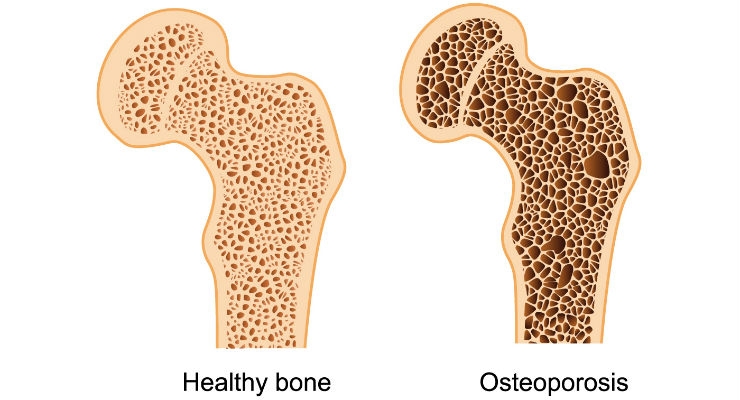Dr Kong Sonya, radiologist, and his team are performing numerous medical imaging examinations within AEMC. The radiology department is equipped with high-performance radiological equipment, an ultrasound room and bone densitometry equipment, which is very important for measuring bone mass and diagnosing possible bone densitometry.
OSTEODENSITOMETRY AND OSTEOPOROSIS
Bone densitometry studies the mass of calcium contained in bone.
This completely painless examination makes it possible to highlight a possible deficit of bone capital in calcium. It is indicated in the diagnosis or the follow-up of the treatment of osteoporosis.
We will have to do a bone densitometry each time we ask ourselves the question of bone loss due in general to age. You know that osteoporosis is responsible for many complications and that it can be prevented with simple treatments. Also it is a way to monitor the amount of bone that remains in the skeleton throughout life.
OSTEOPOROSIS
Bone capital is 70% determined by genetics
Bone capital is built up until the age of 20, after which it degrades slowly at first until the age of 50, then suddenly beyond. This is why specialists speak of osteoporosis as a « pediatric disease with geriatric expression ». This bone capital is dependent on several factors, the most important of which is genetics (70% of it is involved). Problem: it’s out of control.
The other factors, on the other hand, can be more or less modulated:
• Hormones: the data prove it, men are three times less affected than women, precocious puberty weakens the bone capital of young girls, and the hormonal deficiency that occurs during menopause greatly increases the risk of osteoporosis.
• Physical activity: regular participation in sport, and more certainly running or simply walking, plays a role in maintaining bone mass.
80% of people over 70 do not meet their calcium needs

The recommended daily intake of calcium is 1200 mg on average. But needs vary with age: if 1000 mg is sufficient in healthy adults, growing young and old should increase this dose by 50% to reach 1500 mg and meet growth-related needs for the former and losses for the latter. It is estimated that 80% of over 70s do not reach the recommended dose; on average, their intake is around 600 mg per day.
Sometimes necessary calcium drug intake
In general, a varied and balanced diet is sufficient to cover the needs. However, in cases of marked and prolonged deficit, the doctor may recommend pharmaceutical supplementation. This is particularly the case in elderly people whose appetite is greatly reduced and their needs are not met or in patients on anti-osteoporotic treatment. These calcium-based medications usually contain vitamin D, which helps digestive absorption of calcium and helps mineralize bone tissue.
It is also advisable to supplement children and adolescents, to ensure a minimum intake, essential for good bone growth.